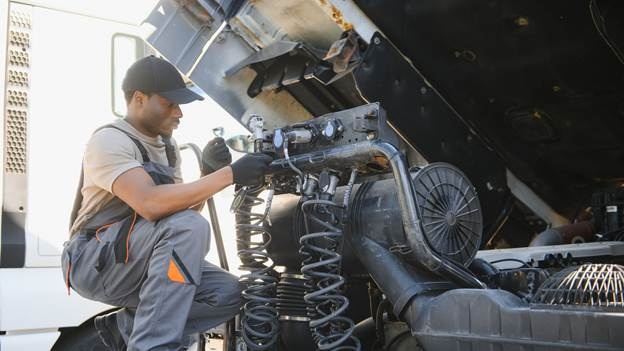Big trips don’t just test your planning—they test your cooling system. Extra weight, aero drag, electrical loads, and long climbs all push coolant, transmission, and intake temperatures higher than your weekday commute ever will. Before you tow a camper into the Rockies or point the hood toward a high pass with a full overland build, run through these ten loadouts that almost always warrant a cooling system recheck—and what to look at for each.
1. Travel Trailers and Toy Haulers
A boxy camper acts like a parachute at highway speeds. That sustained aero drag loads the engine and transmission for hours.
Recheck: Radiator core cleanliness, fan clutch/electric fan output, and trans cooler capacity. Verify you have a stacked-plate auxiliary cooler and fresh ATF. If temps creep on grades, consider a higher-capacity radiator and a full-coverage fan shroud.
2. Roof-Top Tents + Awning + Crossbars
RTTs and bolt-on awnings block airflow and raise the center of gravity, forcing more throttle to maintain speed.
Recheck: Radiator-to-grille sealing foam, condenser cleanliness, and intercooler efficiency (if turbocharged). Relocate light bars away from the grille plane and ensure the radiator core area is not shadowed by fairings or mounts.
3. Front Steel Bumper + High-Mount Winch + Light Bar
Armor plus recovery gear can turn the highest-pressure air stream into dead space if the bumper face is solid.
Recheck: Bumper venting and internal ducting. Lower the winch within the bumper pocket, run a low-profile fairlead, and add louvers. Confirm the fan pulls air across the entire core—not just a small circle.
4. Full Overland Drawer System + Fridge + Water Tanks
Hundreds of extra pounds add throttle on every hill. The fridge’s electrical load means more alternator output—and more underhood heat.
Recheck: Belt condition and tensioner health, alternator cooling, and underhood heat management. Inspect coolant hoses for soft spots and replace the radiator cap with an OE-rated unit if it’s older than two years.
5. Oversize Tires (35s/37s) Without Re-Gearing
Lugging at low RPM elevates combustion and exhaust gas temps, which cascade into coolant temperature.
Recheck: Gear ratios and driving strategy. Until you re-gear, downshift sooner on grades and use manual mode to keep RPM in the torque band. Confirm thermostat operation and water pump impeller condition during your pre-trip service.
6. Rear Bumper Swing-Outs + Jerry Cans + Spare on Carrier
The extra weight may be aft, but the engine still does the work. Added mass increases brake and engine heat on long descents and climbs.
Recheck: Brake fluid freshness (hygroscopic fluid boils sooner), plus the radiator core for debris after dusty runs. If you’re towing as well, add a trans temp gauge or OBD monitor to watch heat in real time.
7. Snowplows or Winter Overland Packages
Plow frames and winter screens block airflow precisely when dense snow packs the grille. Idling and short, heavy pushes spike temps.
Recheck: Shroud integrity, fan clutch, and lower air dam presence. Build a removable winter grille screen that still leaves open area for the radiator’s center mass. Swap coolant if it’s due—fresh inhibitors matter in salted environments.
8. High-Clearance Skid Plates and Full Belly Pans
Great for rocks, not great for hot air evacuation. If air can’t escape, it recirculates under the nose and through the core again.
Recheck: Add rear louvers behind the radiator and at the trailing edge of the front skid. Verify the engine-side foam seals so the fan pulls through the fins, not around them. Watch underhood heat soak after shutdown; excessive soak suggests poor extraction.
9. Bed Rack + Roof Rack + Side Boxes (High Drag)
A loaded rack setup increases drag and wind noise, which equals more throttle for the same speed.
Recheck: Radiator fin condition and alignment (comb bent fins), condenser cleanliness, and intercooler duct sealing. Consider a slightly richer cooling package: thicker-core radiator and higher-CFM fans if you routinely cruise with a headwind.
10. Desert Gear: Sand Ladders, Maxtrax, and Front-Mounted Spares
Piling gear on the nose or grille kills laminar flow and raises underhood temperatures in slow sand work.
Recheck: Remove forward gear in hot conditions; store on roof or rear swing-outs. Verify coolant mix (typically 50/50 with distilled water) and pressure-test the system before a dune trip. A weak cap or tiny leak becomes a big problem when ambient temps climb.
Your Pre-Trip Cooling Checklist
- Cooling Stack Cleanliness: Radiator, condenser, intercooler, and trans cooler should be clean from the back side where debris gets trapped.
- Flow Hardware: New thermostat (quality OE spec), verified water pump with healthy impeller, tight belts, and no collapsing hoses.
- Sealing & Ducting: Foam seals around the radiator, intact shroud, and no gaping holes that let air bypass the core.
- Fan Performance: Mechanical clutch that fully locks when hot, or electric fans with proper relays and wiring gauge.
- Fluids: Fresh coolant at the correct ratio, fresh brake fluid if you’re towing, and ATF appropriate to ambient temps.
- Monitoring: An OBD monitor to watch coolant, intake air, and transmission temps; act before the dash gauge catches up.
If you notice temps trending up after your loadout changes—especially on long grades, headwinds, or hot trail days—don’t shrug it off. Airflow, heat extraction, and fluid health are all solvable. A thorough inspection now can prevent boilovers, limp modes, and cooked transmissions later. And if the system needs more than a once-over, professional heating and cooling repair for 4×4 can pressure-test components, verify fan output, and spec the right combo of radiator, shroud, ducting, and auxiliary coolers to match your real-world load. Build for the heat you’ll actually see, not the brochure conditions—and every climb, tow, and trail day gets easier.


